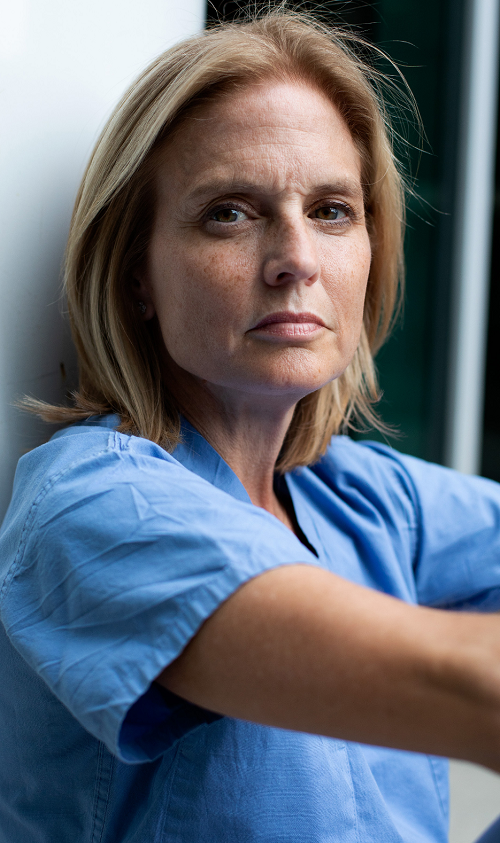US surgeons are killing themselves at an alarming rate. One decided to speak out
By Christina Frangou
Published September 26, 2023
 Carrie Cunningham puffed out her cheeks and exhaled. She looked out at the audience filled with 2,000 of her peers, surgeons who were attending the annual meeting of the Association of Academic Surgery, a prestigious gathering of specialists from universities across the United States and Canada.
Carrie Cunningham puffed out her cheeks and exhaled. She looked out at the audience filled with 2,000 of her peers, surgeons who were attending the annual meeting of the Association of Academic Surgery, a prestigious gathering of specialists from universities across the United States and Canada.
Cunningham, president of the organization, knew what she was about to reveal could cost her promotions, patients and professional standing. She took a deep breath.
“I was the top junior tennis player in the United States,” she began. “I am an associate professor of surgery at Harvard.
“But I am also human. I am a person with lifelong depression, anxiety, and now a substance use disorder.”
The room fell silent.
Cunningham knew others in the room were struggling, too. Doctors are dying by suicide at higher rates than the general population. Somewhere between 300 to 400 physicians a year in the US take their own lives, the equivalent of one medical school graduating class annually.
Surgeons have some of the highest known rates of suicide among physicians. Of 697 physician suicides reported to the CDC’s national violent death reporting system between 2003 and 2017, 71 were surgeons. Many more go unreported.
For years, no one in surgery talked publicly about mental distress in the profession; surgeons have long experienced a culture of silence when it comes to their personal pain. They have a reputation as stoic, determined and driven. They are taught, throughout a decade of grueling training, to dissociate themselves from their body’s natural cues, telling them that it is time to rest, eat or urinate.
The patient’s needs always come first – that’s part of what makes a good surgeon. But this approach can have consequences for a surgeon’s own mental health.
Cunningham had already lost one friend to suicide. She decided that if her job was to save lives, she would begin with her own and those of her colleagues.
She started to tell her story.
When Cunningham was seven, her stepfather put a tennis racket in her hand and discovered a prodigy. She quickly became a star, competing in international tournaments barely three years after she’d first hit a ball.
By 12, she had her own psychologist and nutritionist. She was put on a 3,330-calorie-a-day diet, aiming to gain 3lbs each month on her 4ft 7in frame. She’d run so hard that she’d hyperventilate. Her legs bore constant bruises from banging her racket against them.
She was praised for being scrappy and mentally tough, for being a perfectionist.
In 1987, when she was 16, World Tennis Magazine named her the top junior female player of the year. The next year, she made her debut as a professional player. In one of her first major tournaments, the teenage Cunningham faced the top-ranked Steffi Graf in the Australian Open and lost, but barely.
[READ FULL ARTICLE HERE]
